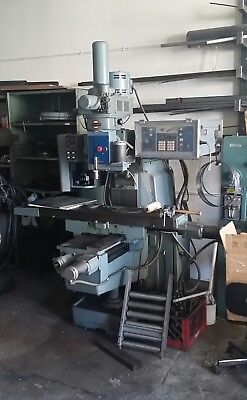- Joined
- Feb 8, 2014
- Messages
- 11,144
I see you are on the west coast. Look for a shizouka with a dead control. This is NOT a good deal but it is an example

SHIZUOKA AN-S 3-Axis Turret Vertical Milling Machine 51x11" Table BANDIT Control | eBay
Find many great new & used options and get the best deals for SHIZUOKA AN-S 3-Axis Turret Vertical Milling Machine 51x11" Table BANDIT Control at the best online prices at eBay! Free shipping for many products!www.ebay.com
I watched for one of these for years, they were always in CA.
If you ever get out this way, bring you trailer and I'll load one up for you. I have a spare taking up floor space in my shop, even has a fresh retrofit on it. It really needs a new home.


